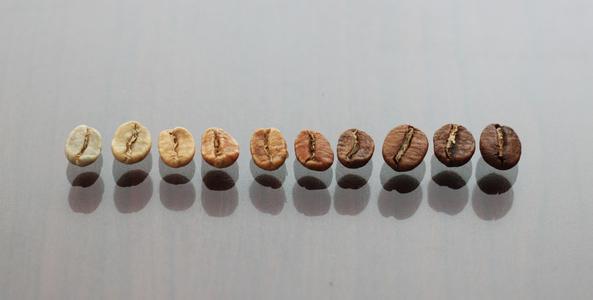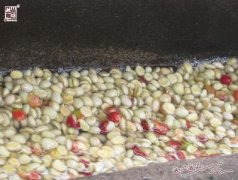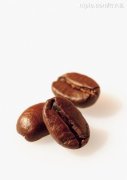Coffee roasting
The growth environment of boutique coffee beans also has higher requirements. Generally grow at an altitude of 1500 meters or even more than 2000 meters above sea level, with appropriate precipitation, sunshine, temperature and soil conditions. Some world-famous coffee beans also have a special geographical environment, such as the alpine clouds in the Blue Mountains, the free shade provided by Kona's afternoon "Flying Cloud", and the volcanic ash soil in Antigua, which provide conditions for the growth of boutique coffee.
In this process, the roaster and cup test appraiser are the key people to control the quality of coffee. The baker is very sensitive to the changes of temperature, time and coffee beans; the mixer is familiar with the origin and characteristics of each kind of raw bean; and the Macado cup test appraiser, known as the "grade appraiser", is a "coffee appraiser" with sensitive sense, professional knowledge and rich experience.
1. Baking
The coffee raw bean itself does not have any taste and aroma. Compared with the dark brown after baking, it is only light green. The flavor and aroma we taste when we enjoy the coffee is due to the complex and mysterious process of roasting.
In raw beans, there is a lot of chloric acid, which disappears with the baking process, releasing familiar and pleasant fruit acids such as acetic acid, citric acid and malic acid in wine. Baked just right, can present these beautiful sour taste moderately. If the deeper the baking, the less fruit acid, the caramel content and bitterness gradually increase.
After the coffee beans are roasted, Macado uses a unique instant cooling to cool the coffee beans quickly to completely retain the flavor of the coffee. This is also the third quality guarantee of Macado coffee.
Degree of baking
Abbreviated baking degree characteristics
L
CN Light
Cinnamon is the lightest and brown.
Light, cinnamon color
M MA Medium America American Bake
MM Medium Mild standard baking, millet color
H HL High Light is deeper than Medium Mild.
H High is deeper than High Light.
C CL City Light is darker than High.
C City is darker, dark brown
FC Full City is very deep, suitable for ice coffee, the surface ooze
F French French baking, close to Italian baking
I Italian has the deepest baking, Italian baking

Important Notice :
前街咖啡 FrontStreet Coffee has moved to new addredd:
FrontStreet Coffee Address: 315,Donghua East Road,GuangZhou
Tel:020 38364473
- Prev

What is the shelling of coffee beans?
Before exporting, brown beans should be treated by grinding, which is to remove the endocarp from the coffee beans to be sold. The residual shell of coffee beans after removal and cleaning of endocarp and drying process is also known as peeling or peeling. It is more difficult to remove the endocarp of coffee beans during wet treatment than during drying, so different shelling machines are needed. There are two main models:
- Next

Aren't the oiled coffee beans fresh?
Oily coffee beans, have you ever roasted coffee beans that are oily on the outside? Why do some coffee beans have a shiny surface, while others are "dry and comfortable" without greasy? What is the relationship between the "oil" of coffee beans and the freshness? Should we buy coffee beans that are "oily" or "unoiled" in appearance? Coffee oil, which is not oil, these "oil" evenly distributed on the surface of coffee beans, in fact
Related
- Guji coffee producing area of Guji, Ethiopia: Humbela, Shakiso, Wulaga
- What is the most expensive variety of Qiloso in BOP multi-variety group?
- How to store the coffee beans bought home?
- Why are Yemeni coffee beans so rare now?
- Ethiopian Sidamo all Red Fruit Sun Sun Santa Vini Coffee beans
- SOE is mostly sour? What does it mean? Is it a single bean? what's the difference between it and Italian blending?
- Is Italian coffee beans suitable for making hand-brewed coffee?
- How to choose coffee beans when making cold coffee? What kind of coffee beans are suitable for making cold coffee?
- Just entered the pit to make coffee, what kind of coffee beans should be chosen?
- Can only Japan buy real Blue Mountain Coffee? What are authentic Jamaican Blue Mountain coffee beans?

